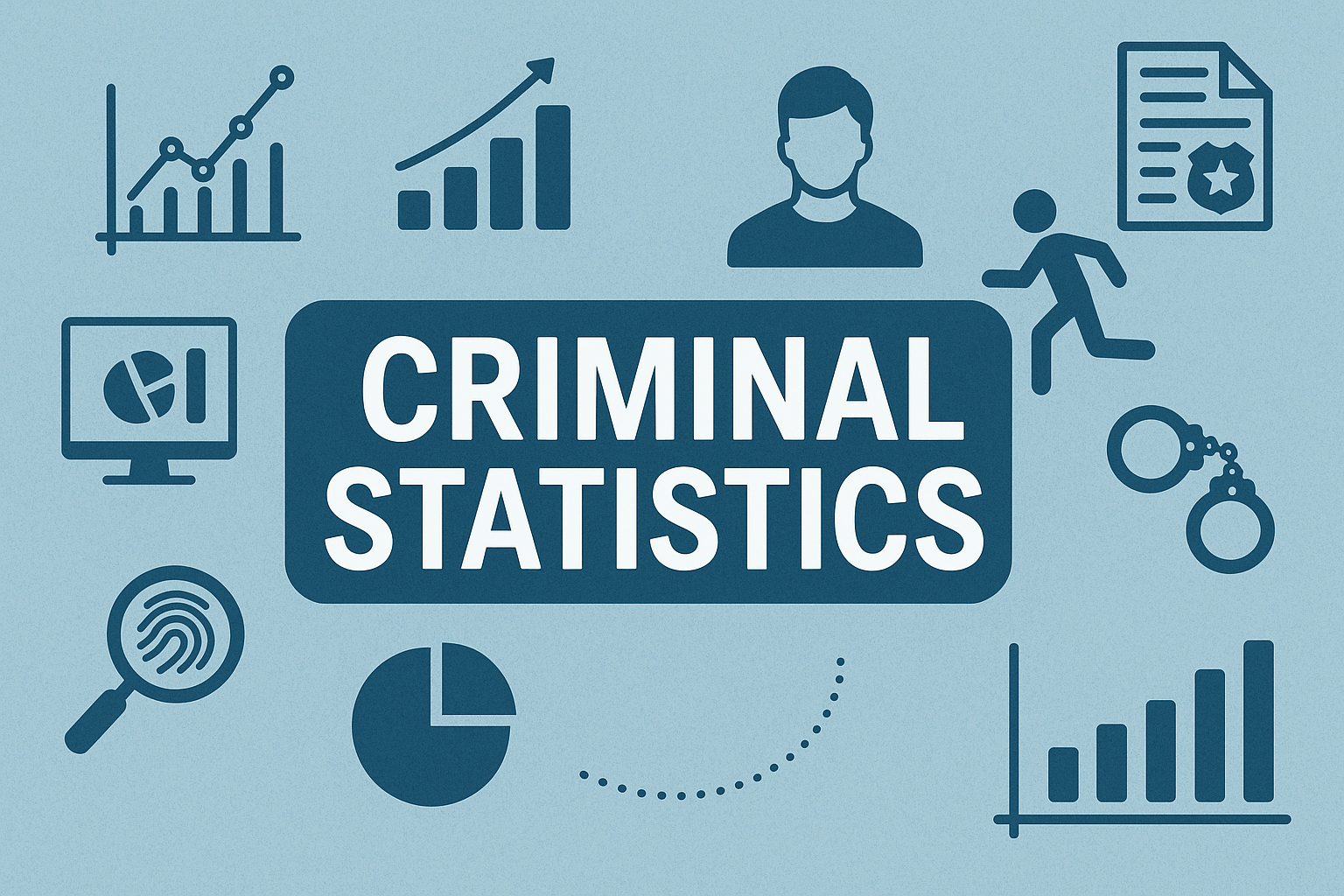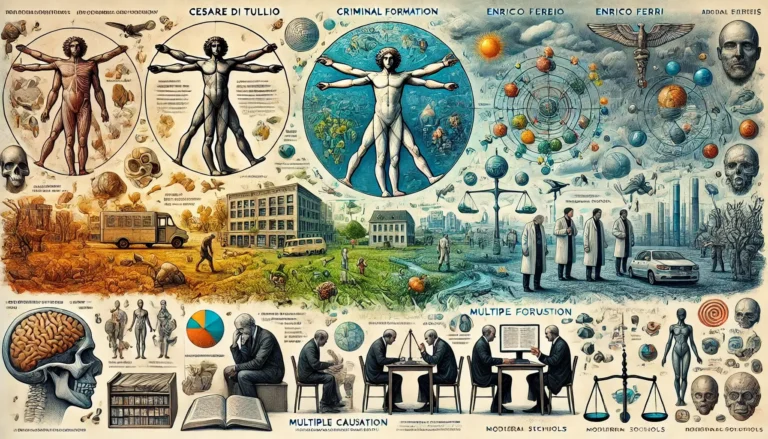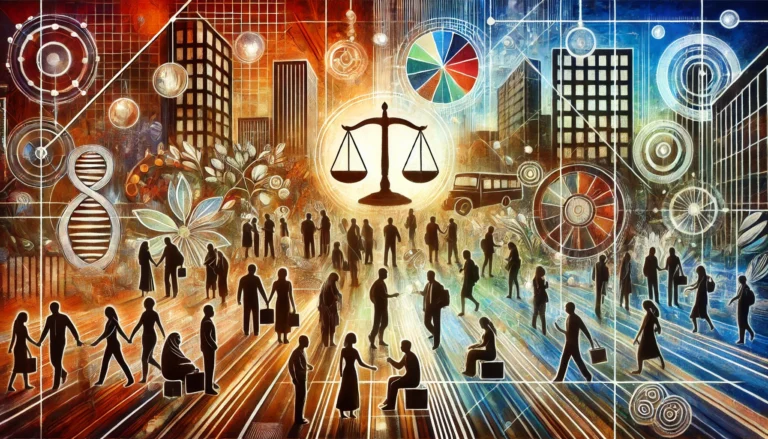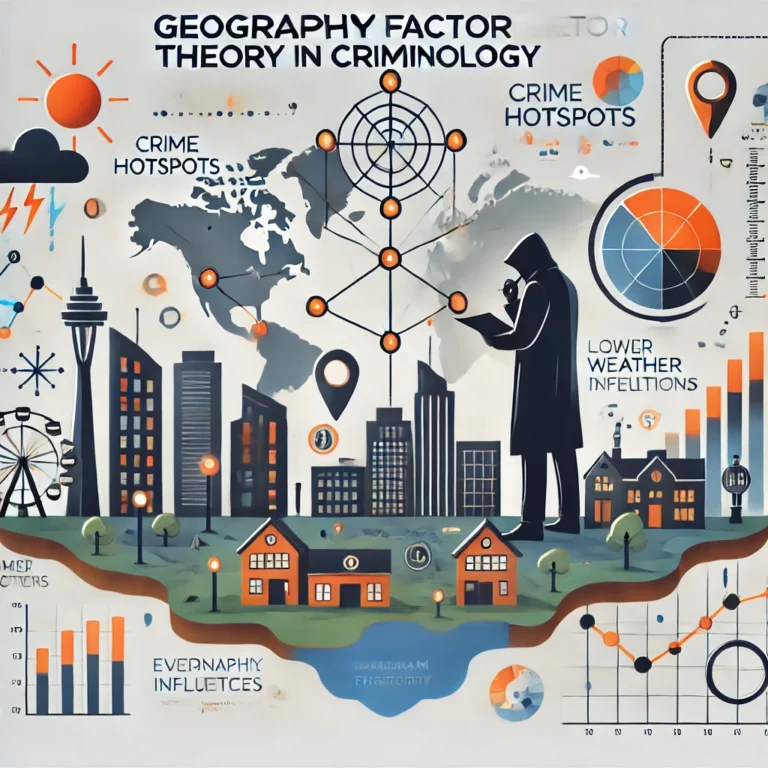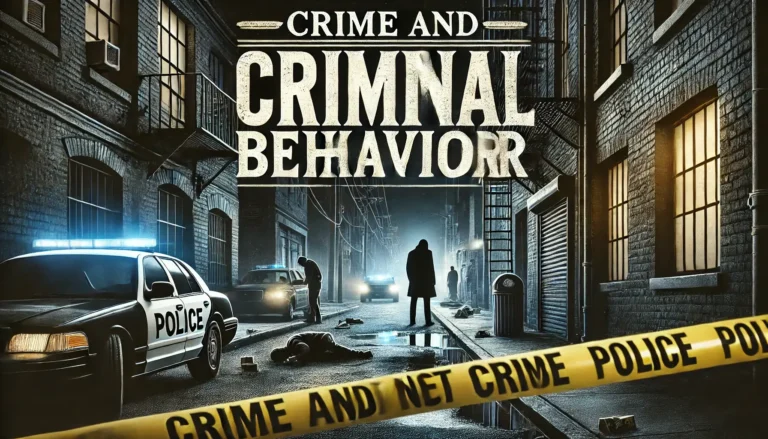Criminal Statistics: Understanding Crime Through Data
Introduction
In an increasingly data-driven world, criminal statistics play a vital role in understanding, analyzing, and responding to crime. From law enforcement agencies to policymakers and researchers, the use of statistical data is essential for creating effective crime prevention strategies, evaluating criminal justice systems, and informing the public. Criminal statistics offer insights into crime rates, patterns, demographics, and trends, forming the backbone of modern criminological research.
This comprehensive article explores the significance of criminal statistics, their types, methods of collection and analysis, the challenges involved, and how these statistics are used to shape policies and improve public safety around the globe.
1. What Are Criminal Statistics?
Criminal statistics are systematic collections and analyses of data related to crime and criminal behavior. These statistics help us quantify criminal activity and understand its scope and nature within a specific time frame and location.
Criminal statistics may include information such as:
- Number of crimes committed
- Types of crimes (violent, property, cyber, etc.)
- Demographics of offenders and victims
- Arrest and conviction rates
- Recidivism rates
- Geographic distribution of crimes
By translating criminal activity into measurable data, criminal statistics enable experts to identify trends, make comparisons, and forecast future developments.
2. The Importance of Criminal Statistics
Criminal statistics serve multiple essential purposes:
a. Informed Decision-Making
Policymakers rely on accurate crime data to allocate resources, create laws, and implement safety measures. Without reliable statistics, any efforts to reduce crime risk being inefficient or misdirected.
b. Evaluating Criminal Justice Systems
By analyzing statistics related to arrests, prosecutions, and sentencing, governments can assess the effectiveness and fairness of their criminal justice institutions.
c. Academic and Criminological Research
Researchers and criminologists use criminal statistics to test theories, analyze social behavior, and study the causes and effects of crime in various communities.
d. Public Awareness and Transparency
Criminal statistics are often made available to the public, promoting transparency and helping communities understand the safety dynamics of their environments.
3. Types of Criminal Statistics
Criminal statistics can be categorized into several types based on their source, focus, and method of collection:
a. Official Crime Statistics
These are compiled by government agencies such as police departments, judicial institutions, and correctional facilities. They include reported crimes, arrests, court cases, and imprisonment data.
b. Victimization Surveys
Victim surveys, such as the National Crime Victimization Survey (NCVS) in the U.S., ask individuals whether they have been victims of crime, including unreported incidents. These surveys help uncover the “dark figure of crime” — crimes that go unreported and unnoticed by authorities.
c. Self-Report Studies
These involve individuals reporting their own involvement in criminal activity, usually through anonymous questionnaires. They provide insights into crimes that may not be captured by official statistics.
d. Criminal Justice Administrative Data
These include detailed records from courts, correctional institutions, and probation/parole offices, focusing on the processing and outcomes of criminal cases.
4. Methods of Collecting and Analyzing Criminal Statistics
The accuracy and usefulness of criminal statistics depend heavily on how the data is collected and analyzed. Various methods and sources contribute to building a comprehensive picture of criminal activity:
a. Data Collection Techniques
- Police Reports
Law enforcement agencies gather crime data from reports filed by officers and victims. This method is standard for official crime statistics and forms the foundation for national crime databases. - National Surveys
Large-scale surveys such as victimization or self-report studies are conducted regularly to supplement police data and capture unreported crimes. - Judicial and Correctional Records
Courts and correctional systems provide data on prosecutions, sentencing, inmate demographics, and parole conditions, offering insight into how the system handles criminal behavior. - Digital and Technological Sources
With the rise of cybercrime, digital surveillance, and big data analytics, new tools are now used to track and predict crime patterns more accurately than ever before.
b. Data Analysis Tools
Once collected, data is analyzed using various statistical methods:
- Descriptive Statistics (mean, median, standard deviation) summarize crime trends.
- Inferential Statistics allow researchers to draw conclusions from sample data.
- Geospatial Analysis is used to map crime patterns across regions.
- Predictive Modeling helps forecast future crime risks using historical data.
These tools enhance our understanding of crime dynamics and improve the effectiveness of law enforcement strategies.

5. Challenges in Criminal Statistics
Despite their importance, criminal statistics face several obstacles that may affect their reliability and interpretation:
a. Underreporting of Crimes
Many crimes, especially sexual assaults, domestic violence, and cybercrimes, go unreported due to fear, stigma, or mistrust in authorities. This creates a significant gap between actual crime and reported statistics.
b. Variability in Definitions and Reporting Standards
Different jurisdictions may define crimes differently or follow unique procedures for recording data. This inconsistency can make comparisons across regions or countries difficult.
c. Political and Institutional Bias
In some cases, crime statistics may be manipulated or selectively reported to serve political agendas or institutional interests, leading to biased conclusions.
d. Limited Access to Data
Researchers often face barriers in accessing sensitive or restricted criminal justice data, especially when privacy concerns are involved.
6. Uses of Criminal Statistics in Policy and Planning
Criminal statistics are instrumental in shaping public policy, improving security, and reforming justice systems:
a. Resource Allocation
Law enforcement agencies use crime data to determine where to deploy officers, install surveillance systems, or increase patrols, especially in high-crime zones.
b. Criminal Justice Reforms
Policymakers analyze statistics on arrests, racial disparities, sentencing lengths, and recidivism rates to guide reforms aimed at achieving fairness and reducing systemic bias.
c. Crime Prevention Strategies
Statistical analysis identifies crime hotspots and recurring patterns, enabling authorities to launch preventive initiatives such as neighborhood watch programs or youth engagement campaigns.
d. International Comparisons
Global organizations like the United Nations and Interpol rely on criminal statistics to compare crime trends internationally and develop cooperative law enforcement frameworks.
7. Global Case Studies and Applications
Let’s explore how criminal statistics have been effectively used in real-world scenarios:
a. The FBI’s Uniform Crime Reporting (UCR) Program – USA
The UCR is one of the most comprehensive sources of crime data in the United States. It collects data from thousands of police departments and is instrumental in assessing national crime trends annually.
b. The Crime Survey for England and Wales (CSEW)
Unlike traditional crime data based on police reports, the CSEW uses victimization surveys to gain deeper insight into unreported crimes and citizens’ perceptions of safety.
c. Japan’s Community-Based Crime Prevention
Japanese authorities use localized crime statistics to design highly targeted interventions, leading to one of the lowest crime rates among developed countries.
d. The United Nations Office on Drugs and Crime (UNODC)
UNODC aggregates crime data from around the world and provides analytical tools to support global efforts against transnational crimes like human trafficking and drug smuggling.

8. The Scientific Value of Criminal Statistics
Criminal statistics are not just administrative tools; they hold profound scientific value. These data sets are essential for the empirical study of crime and the development of criminological theories.
Criminal statistics offer more than just numbers; they provide critical insights into the patterns and nature of unlawful behavior. By bridging the gap between what crime is being measured and the broader social reality, these statistics reinforce the scientific value of criminal statistics, offering criminologists a reliable foundation for research, analysis, and policy-making.
a. Foundation for Criminological Research
Without quantifiable crime data, the study of criminology would be largely speculative. Criminal statistics enable scholars to test hypotheses, identify causal relationships, and verify theoretical frameworks related to criminal behavior.
b. Measuring Social Change
Over time, changes in criminal statistics can indicate broader social transformations—such as shifts in economic stability, public morality, education levels, or technological access.
c. Evidence-Based Policy Making
Scientific research grounded in statistical evidence leads to smarter, data-informed policy decisions rather than reactive or politically driven responses to crime.
d. Interdisciplinary Applications
Fields such as sociology, psychology, economics, and public health use criminal statistics to analyze the roots and effects of crime, further amplifying their scientific relevance.
9. Criminal Statistics and Technology
Modern technology has revolutionized the collection, analysis, and application of criminal statistics:
a. Big Data and Predictive Analytics
Using large volumes of data, predictive analytics software can forecast crime hotspots, suggest optimal police deployment, and even identify individuals at risk of offending or victimization.
b. Geographic Information Systems (GIS)
GIS tools are used to map crime locations, allowing law enforcement to visualize patterns and allocate resources efficiently.
c. Artificial Intelligence (AI)
AI-powered algorithms can detect anomalies in crime data, recognize patterns invisible to human analysts, and assist in solving complex cases.
d. Real-Time Crime Centers
Many cities now use integrated technology platforms that provide live data from surveillance cameras, emergency calls, and police reports, helping officers respond proactively.
10. Ethical Considerations in Crime Data
Despite their utility, criminal statistics raise significant ethical concerns:
a. Privacy and Consent
Collecting personal data related to crime involves sensitive information. Safeguarding individuals’ privacy and securing consent, especially in victimization surveys, is crucial.
b. Data Misuse
There’s a risk that crime data could be misused—intentionally or unintentionally—to justify discriminatory practices or over-policing in marginalized communities.
c. Algorithmic Bias
Technologies using historical crime data can inadvertently reinforce existing social biases, especially if the data reflects systemic discrimination.
d. Transparency and Accountability
Organizations handling criminal statistics must ensure transparency in data collection and interpretation, and allow public access wherever appropriate to uphold accountability.
Conclusion
Criminal statistics are more than numbers—they are powerful tools that shape our understanding of crime and our responses to it. From scientific inquiry and social analysis to policymaking and law enforcement, the role of statistical data in the criminal justice system is foundational and far-reaching.
As technology evolves and the demand for data-driven governance increases, the ethical and scientific integrity of criminal statistics will be more crucial than ever. By ensuring accuracy, transparency, and ethical responsibility, we can harness the full potential of criminal statistics to build safer, more just societies.
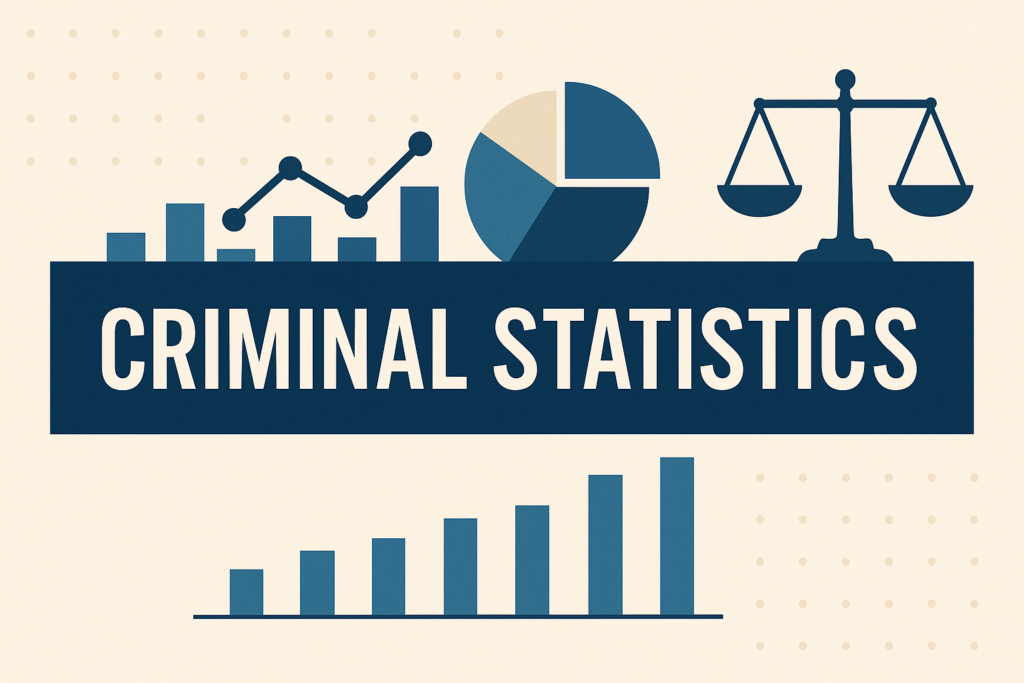
References
1. FBI Uniform Crime Reporting (UCR) Program
- Source: Federal Bureau of Investigation (FBI)
- URL: https://www.fbi.gov/services/cjis/ucr
2. Crime in the United States (UCR Reports)
- Source: FBI, Uniform Crime Reports
- URL: https://www.fbi.gov/services/cjis/ucr
3. The Importance of Crime Statistics: Crime Trends and Policy
- Source: Journal of Criminal Justice
- Citation: Author(s). (Year). “The Importance of Crime Statistics: Crime Trends and Policy.” Journal of Criminal Justice, Volume X, Issue Y.
4. Crime Victimization Survey (CSEW)
- Source: Office for National Statistics, UK
- URL: https://www.ons.gov.uk/
5. Big Data and Crime Analysis: A Review
- Source: International Journal of Criminology
- Citation: Author(s). (Year). “Big Data and Crime Analysis: A Review.” International Journal of Criminology and Social Sciences, Volume Z.
6. Predictive Policing and Crime Analytics
- Source: International Association of Chiefs of Police (IACP)
- URL: https://www.theiacp.org/
7. Ethical Issues in the Use of Crime Data
- Source: Criminology Research Journal
- Author(s). (Year). “Ethical Issues in the Use of Crime Data.” Criminology Research Journal, Volume A, Issue B.

